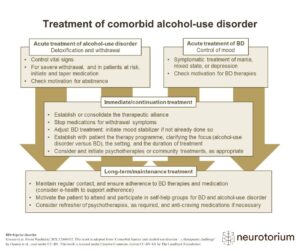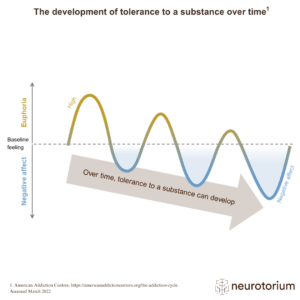The image shows how alcohol may interact with the neurotransmitter systems of the brain’s reward pathway, by inhibiting GABA signalling in the ventral tegmental area which in turn disinhibits dopaminergic projections to the nucleus accumbens:1
The reward circuitry of the brain is modified by alcohol use, which is mediated by dopamine and endogenous opioids.1,2 Alcohol interacts with many systems, but is thought to have the net effect of increasing downstream dopamine release in the nucleus accumbens.1,2,3 The stress circuitry of the brain is also modified by alcohol use, mediated by corticotropin releasing factor and noradrenergic influences on the GABA interneurons of the amygdala.1,2
Acess our slide deck on neurobiology and aetiology in substance use disorders and other addicitions





